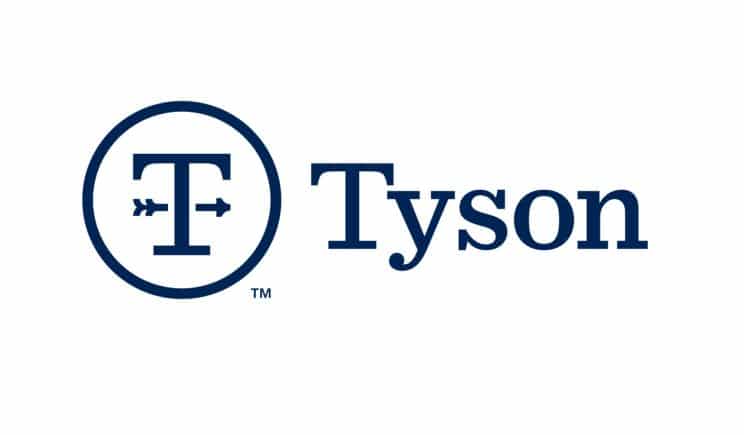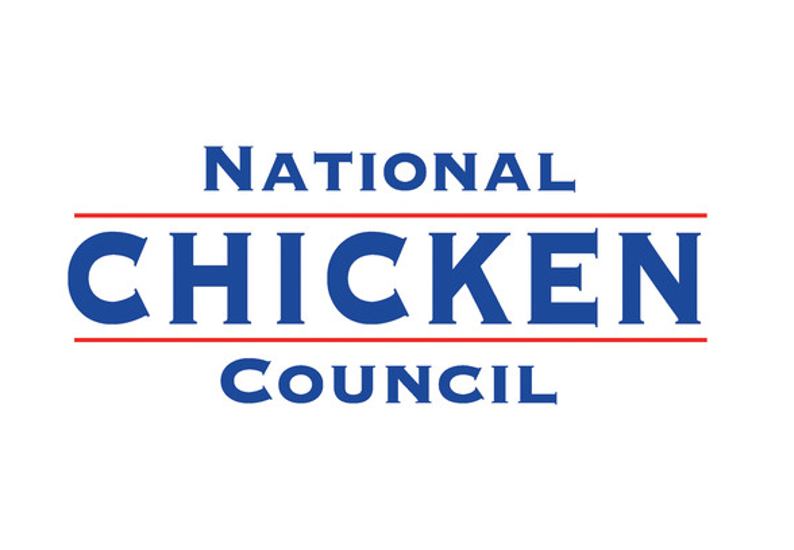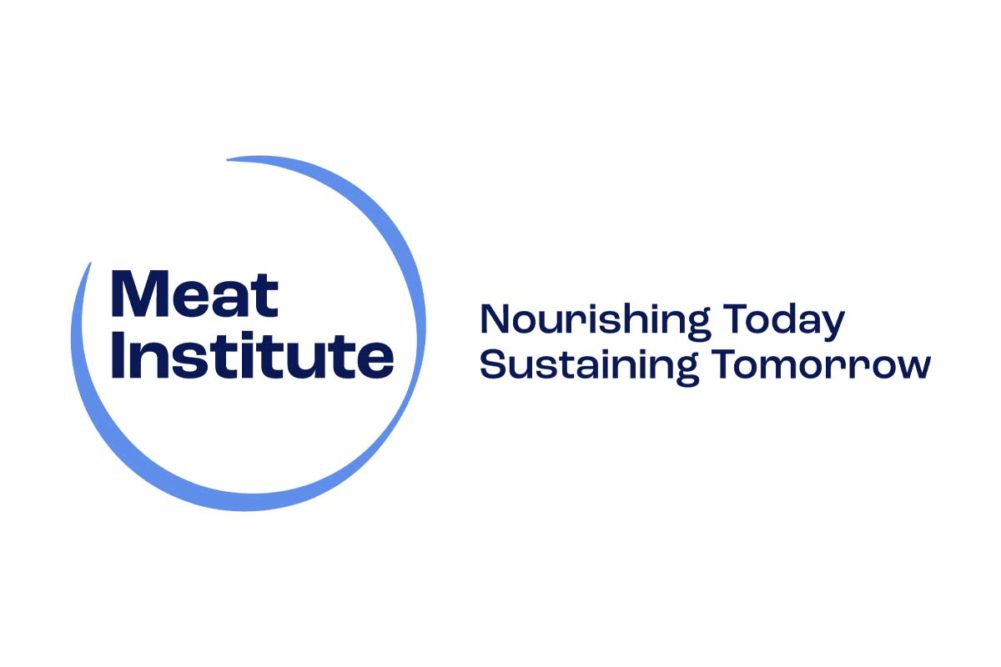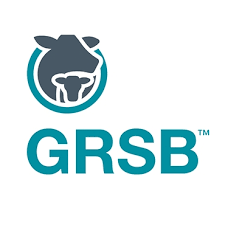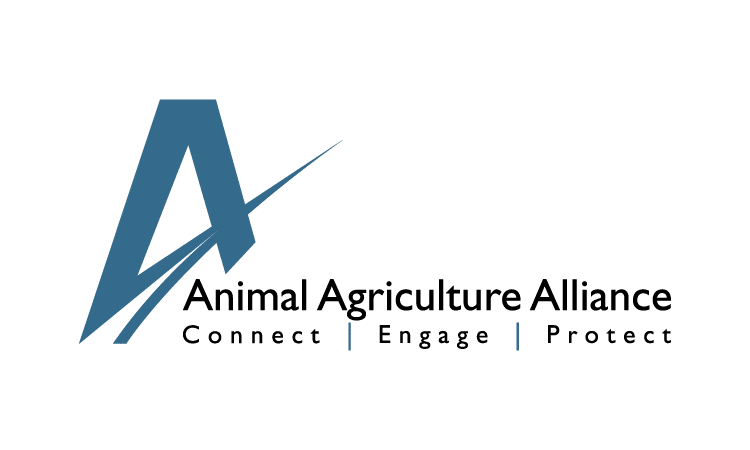Background
Tyson Foods is one of the world’s four largest meat producers,1Laura Reiley. “Biden’s climate change plan may not nix cheeseburgers, but science says beef should be on the chopping block,” The Washington Post, April 26, 2021. Archived July 16, 2021. producing approximately 20 percent of U.S. beef, pork and chicken, according to the company’s website.2“What we do,” Tyson Foods. Archived June 28, 2021. Archive.ph URL: https://archive.ph/gf1h6
Founded in 1935 and headquartered in Springdale, Arkansas, Tyson’s business divisions include breeding, raising, and processing of chickens, cows, and pigs, and the production of frozen and refrigerated food products.3“Tyson Foods, Inc. history, profile and history video,” CompaniesHistory.com. Archived June 16, 2021. Archive.ph URL: https://archive.ph/PLG31
In Tyson’s 2020 annual report, the company recorded 139,000 employees and $43.2 billion in sales. During the same period, it recorded the capacity to slaughter 8 million cows, 24 million pigs, and 2 billion chickens at 204 US-based slaughter facilities owned or leased by Tyson.4“United States Securities and Exchange Commission: Washington, D.C. 20549: Form 10-K,” U.S. Securities and Exchange Commission. Archived July 2, 2021.
Since 2019, Tyson has been launching plant-based products5Elaine Watson. “From ‘made with plants’ to plant-based… Tyson eliminates eggs from Raised & Rooted nuggets, drops ‘blended’ burger,” FoodNavigator-USA, December 7, 2020. Archived June 16, 2021. Archive.ph URL: https://archive.ph/ao84Y and investing in start-ups developing meat and seafood alternatives.6“Tyson invests $2.2 million in in-vitro meat start-up,” vegconomist, May 4, 2018. Archived January 17, 2021. Archive.ph URL: https://archive.ph/JyUoc
Environmental organizations GRAIN and the Institute for Agriculture and Trade Policy (IATP) estimated in a 2018 report that Tyson’s total yearly emissions total 118.1 megatonnes of carbon dioxide equivalent (CO2e).7“Emissions impossible: how big meat and dairy are heating up the planet,” Institute for Agriculture and Trade Policy, July 2018. Archived July 13, 2021.
Between 2000 and 2020, Tyson Foods spent $25 million on lobbying and $3.2 million on donations to federal political candidates. During the same period, Tyson frequently lobbied the U.S. Congress and the U.S. Environmental Protection Agency (EPA) on climate-related and environmental topics, issuing 114 quarterly lobbying reports filed with the Secretary of the Senate’s Office of Public Records (SOPR).8Oliver Lazarus, Sonali McDermid and Jennifer Jacquet. “The climate responsibilities of industrial meat and dairy producers,” Climatic Change, March 25, 2021. Archived July 14, 2021. Archive.ph URL: https://archive.ph/NybZc
As of 2021, Tyson Foods has been fined more than $58 million for environmental-related violations since 2000, according to data from the Good Jobs First non-profit organisation.9“Violation tracker parent company summary,” Good Jobs First. Archived June 16, 2021. Archive.ph URL: https://archive.ph/niK85
Stance on Climate Change
In 2021, Tyson announced a goal of achieving net-zero deforestation by 2030 and net-zero emissions, including scopes 1, 2 and 3, by 2050.10“Tyson Foods targets 2050 to achieve net zero greenhouse gas emissions,” Tyson Foods, June 9, 2021. Archived June 18, 2021. Archive.ph URL: https://archive.ph/9pFsC The company stated that its emissions reduction target had been approved by the Science Based Targets initiative (SBTi), a partnership between CDP, the United Nations Global Compact, World Resources Institute (WRI) and the World Wide Fund for Nature (WWF).11“About us,” Science Based Targets. Archived July 14, 2021. Archive.ph URL: https://archive.ph/dyx2i
The company plans to achieve its net zero goal by transitioning to 50 percent renewable energy across Tyson’s U.S. operations by 2030,12“Tyson Foods targets 2050 to achieve net zero greenhouse gas emissions,” Tyson Foods, June 9, 2021. Archived June 18, 2021. Archive.ph URL: https://archive.ph/9pFsC encouraging grain farmers to adopt more efficient fertilizer practices13“Tyson Foods sets two million acre land stewardship target,” Tyson Foods, April 3, 2018. Archived June 16, 2021. Archive.ph URL: https://archive.ph/2NrnU and facilitating more sustainable beef production through improved grazing management.14“Tyson Foods becomes first U.S. food company to verify sustainable cattle production practices at scale,” Tyson Foods, September 9, 2020. Archived June 16, 2021. Archive.ph URL: https://archive.ph/FESoP
In 2017, Tyson Foods announced plans to reduce the company’s greenhouse gas (GHG) emissions by 30 percent from 2016-2030.15“Sustaining our world: 2017 sustainability report,” Tyson Foods. Archived June 16, 2021 The company’s climate target was accepted by the SBTi in 2018. In its 2019 sustainability report, it said it was “the first U.S. protein company in the food and beverage sector to receive such an approval.”16“2019 Sustainability report,” Tyson Foods. Archived June 16, 2021.
At the time, Tyson’s climate targets included “setting facility-level energy and emissions targets and investing in a more fuel-efficient fleet.”17“Goals update,” Tyson Foods. Archived June 25, 2021. Archive.ph URL: https://archive.ph/tGRs1
In 2017, Tyson’s then-CEO Tom Hayes stated that the company was “committed to helping to create a more sustainable food system, which involves cleaning up its factory farms and investing in more plant-based proteins.”18Jade Scipioni. “Tyson Foods CEO: the future of food might be meatless,” Fox Business, March 7, 2017. Archived June 16, 2021. Archive.ph URL: https://archive.ph/2nEra
Tyson first referred to climate change in its 2005 sustainability report, stating that “greenhouse gas (GHG) emissions are important due to their potential impact on the global climate.” In 2004, the company joined Climate RESOLVE, an emissions reduction program developed by the Business Roundtable, which represents U.S. CEOs.19“Living our core values: 2005 sustainability report,” Tyson Foods. Archived June 16, 2021. The same year, it became an Environmental Protection Agency (EPA) “Climate Leaders Partner,” a voluntary program to “develop an aggressive corporate-wide GHG reduction goal to be achieved over 5 to 10 years.”20“Climate Leaders Partnership Agreement,” United States Environmental Protection Agency, September 2006. Archived July 16, 2021. Archive.ph URL: https://archive.ph/C7ZXB
Livestock Emissions
The company first reported its emissions in 2007, stating that its GHG emissions during the calendar year 2004 were 5.53 million metric tonnes (Mt), referring to its scope 1 and 2 emissions. It described these as comprising “data related to facility fuel and electricity usage, transportation fuels, refrigeration usage, and anaerobic biogas production.”21“sustainability it’s in our nature: 2007 sustainability report,” Tyson Foods. Archived June 16, 2021.
In Tyson’s 2020 sustainability report, the company reported 6.174 Mt CO2e in scope 1 and 2 emissions and said it was “performing at or above target” with regard to reducing its emissions by 30 percent by 2030.22“The formula to feed the future: 2020 progress report,” Tyson Foods. Archived June 17, 2021. In its 2019 sustainability report, the company reported 5.73 Mt CO2e in scope 1 and 2 emissions, noting that their scope 1 emissions increased from 2018 to 2019 due to “the acquisition of new facilities.” The company did not explain the increase in emissions from 2019 to 2020.23“2019 Sustainability report,” Tyson Foods. Archived June 16, 2021.
According to Tyson’s 2017 sustainability report, 90 percent of the company’s emissions come from its supply chain and are not owned by the company, known as scope 3 emissions.24“Sustaining our world: 2017 sustainability report,” Tyson Foods. Archived June 16, 2021
In contrast to Tyson’s estimates, environmental organisations GRAIN and IATP estimated in 2018 that Tyson’s total yearly emissions are 118.1 Mt CO2e, using the UN Food and Agriculture Organisation’s (FAO) Global Livestock Environmental Assessment Model (GLEAM) 2.0, which covers scopes 1–3 emissions.25“Emissions impossible: how big meat and dairy are heating up the planet,” Institute for Agriculture and Trade Policy, July 2018. Archived July 13, 2021.
Scope 1 and 2 emissions stem from direct activities of an organisation or activities under their control and from the production of energy used by the organisation.26“What is the difference between scope 1, 2 and 3 emissions?” Compare Your Footprint, November 2, 2018. Archived July 14, 2021. Archive.ph URL: https://archive.ph/bvtk7. Scope 3 emissions are all other indirect emissions from a company’s activities, originating from sources it does not own or control, including emissions caused by land use, land-use change, and farms that supply meat companies.27Dr. Meryl Richards. “Measure the chain: tools for assessing GHG emissions in agricultural supply chains,” Ceres. Archived July 13, 2021.
According to a 2021 study by New York University researchers, meat companies “emphasize mitigating energy use, with limited focus on emissions (e.g., methane) from animal and land management and land-use change, which make the biggest warming contributions in the agricultural sector,” noting that “the majority of […] Tyson’s emissions are the result of land-use changes for feed production in places like the Brazilian Amazon.”28Oliver Lazarus, Sonali McDermid and Jennifer Jacquet. “The climate responsibilities of industrial meat and dairy producers,” Climatic Change, March 25, 2021. Archived July 14, 2021. Archive.ph URL: https://archive.ph/NybZc
Until 2017, the company refused to disclose information to the climate charity CDP, stating that it had decided to communicate emissions data “through alternative but equally effective means” and prefered “to continue working with EPA regarding GHG inventory information because of the Agency’s expertise and long-term management responsibility for climate change.”29“2009 sustainability report: rooted in tradition, growing responsibly,” Tyson Foods. Archived June 16, 2021. In 2021, CPD gave Tyson scores of C and B- for their disclosure regarding “Forests” and “Climate Change,” respectively.30“Search and view past CDP responses: Tyson Foods,” CDP. Archived June 16, 2021. Archive.ph URL: https://archive.ph/yAKmq
In 2009, an investment research firm claimed that Tyson produces substantial climate-heating methane emissions. Tyson rejected this claim, writing in their 2009 annual report that “manure management accounted for [only] 4.7 percent of N2O [nitrous oxide] and 7.5 percent of CH4 [methane] emissions in the U.S. during the 2007 reporting year,” according to EPA figures.31“2009 sustainability report: rooted in tradition, growing responsibly,” Tyson Foods. Archived June 16, 2021.
Pollution
Research by the Union of Concerned Scientists revealed in April 2020 that, between 2018 and 2022, over 371 million pounds of pollutants – including nitrogen, phosphorus, chloride, oil and cyanide – were released into waterways by 41 of Tyson’s slaughterhouses and mega processing plants.32 “Speech by President von der Leyen at the European Parliament Plenary on the conclusions of the European Council meetings, in particular the special European Council meeting of 1 February 2024,” European Commission, February 6, 2024. Archived June 26, 2024. Archive URL: https://archive.ph/1mV6j This was found in wastewater – which also contained bacteria, faeces, and animal blood – that was directly disposed into streams, rivers, and wetlands across 17 states of the U.S.
Key Narratives
Tyson Foods promotes a number of narratives to justify its business model. Find out more about how the meat industry is climate-washing its activities in our investigation. And you can read counter-arguments and criticisms of these narratives in our factsheet.
‘Animal agriculture isn’t a serious driver of climate change’
‘Our feed comes from responsible sources’
In Tyson’s 2020 sustainability report, the company announced that its international expansion “has resulted in the need to reassess the risk of deforestation across our operations and supply chain.” According to Tyson, an assessment by Proforest, a sustainability nonprofit focused on the agricultural sector, concluded that “94% of our land footprint is at no-to-low risk of being associated with deforestation and “approximately 3% is at medium-to-high risk,” while “the sourcing origin could not be identified for the other 3%.”33“The formula to feed the future: 2020 progress report,” Tyson Foods. Archived June 17, 2021.
In 2020, Tyson announced it was partnering with the Round Table on Responsible Soy (RTRS) to purchase credits for soybean meal that “will be used to feed chickens in our supply chain in regions that typically source from high risk areas” and with the non-profit organisation Proforest to conduct a deforestation risk assessment.34Flora Southey. “Tyson Foods commits to sustainable soy in poultry supply chain,” Food Navigator, January 2, 2020. Archived January 16, 2021. Archive.ph URL: https://archive.ph/uPxIx
The RTRS has come under criticism, however, with a 2021 Greenpeace report describing the program’s claims of supporting responsible feed production as “misleading, allowing companies a green image even if they are still contributing to human rights abuses and/or the destruction of nature.” It noted that “the vast majority of RTRS soya sales are based on credits” and that credit buyers “thus might not know whether the producers of the actual products they are buying are engaging in deforestation or other ecosystem destruction.”35“Destruction: certified,” Greenpeace, March 2021. Archived July 11, 2021.
‘Grazing supports biodiversity’
In 2020, Tyson announced plans to start sourcing cattle from a verification program titled “BeefCARE,” which includes “practices such as having a cattle grazing management plan to help promote vegetative growth and diversity.”36“Tyson Foods becomes first U.S. food company to verify sustainable cattle production practices at scale,” GlobeNewswire, September 9, 2020. Archived June 16, 2021. Archive.ph URL: https://archive.ph/RKkuH
The US-based environmental group, the Center for Biological Diversity, states: “The ecological costs of livestock grazing exceed that of any other western land use.”37“Grazing,” Centre for Biological Diversity. Archived July 14, 2021. Archive.ph URL: https://archive.ph/DAcFu A 2020 study by researchers from the University of Alberta warned that scaling up livestock grazing to meet future food demand could threaten the biodiversity of herbivores and pollinators worldwide.38Alessandro Filazzola et al. “The effects of livestock grazing on biodiversity are multi-trophic: a meta-analysis,” Ecology Letters, 2020. Archived July 13, 2021.
‘Meat is needed for a healthy diet and to feed the world’
‘Meat is needed to feed the world’s growing population’
As part of the Coalition for Global Protein, an initiative launched by Tyson, the company co-produced a video that states: “Research shows that the world isn’t getting enough [protein] and there are life-long consequences. That’s today. The global population is growing fast. If we can’t meet the protein demand of today, it will take substantial changes to meet the demand of the future. With a challenge this big, we can’t just look to one solution. A challenge this big demands we consider every option.” At this point, the video displays a list of foods including chicken, tofu, pork, seeds, beef, legumes, and eggs.39“Imagining new and creative solutions for the future of sustainable protein,” video uploaded by Coalition For Global Protein. Archived .mp4 on file at DeSmog.
Tyson also claims during the video that inhabitants of Africa, South America, Asia, and Europe are not meeting the dietary requirement of 52g of protein per day.
Unlike Tyson’s estimates, the latest protein supply figures from FAO, for 2013, recorded average protein consumption of 69.1g per capita per day in Africa, 77.57g in Asia, 86.09g in South America, and 102.06g in Europe.40“Food supply – livestock and fish primary equivalent,” Food and Agricultural Organization of the United Nations. Archived July 14, 2021. Archive.ph URL: https://archive.ph/NbEYh The World Resources Institute (WRI), a sustainable development organisation, argues that overconsumption of protein is already occurring in all of the world’s regions, and particularly in wealthy countries.41“People are eating more protein than they need—especially in wealthy regions,” World Resources Institute, April 20, 2016. Archived June 16, 2021. Archive.ph URL: https://archive.ph/EOBpD
‘Meat is an exceptional source of nutrients’
The company states that “nutritional fads come and go but most nutritionists agree that protein is an essential part of a well-balanced diet”42“Helping people eat well,” Tyson Foods. Archived June 28, 2021. Archive.ph URL: https://archive.ph/DBG8d and describes meat as “an important part of a healthy diet, providing essential nutrients including amino acids, vitamins and minerals.”43“Dietary guidelines,” Tyson Foods. Archived June 16, 2021. Archive.ph URL: https://archive.ph/XyJ81
Nutrition associations, including the British Nutrition Foundation, approve of meat-free diets, however.44“Plant-based diets,” British Nutrition Foundation, June 2019. Archived July 14, 2021. Archive.ph URL: https://archive.ph/Afaf1 According to the American Dietetic Association, “appropriately planned vegetarian diets, including total vegetarian or vegan diets, are healthful, nutritionally adequate, and may provide health benefits in the prevention and treatment of certain diseases.”45Winston J Craig, Ann Reed Mangels and American Dietetic Association. “Position of the American Dietetic Association: vegetarian diets,” American Dietetic Association, July 1, 2009. Archived July 14, 2021. Archive.ph URL: https://archive.ph/JLA9T
‘Innovations in animal agriculture will tackle climate change’
‘We are producing less emissions-intensive meat’
Tyson reported that it had reduced its GHG emissions intensity from 190kg of CO2e emitted for every 1,000 pounds of product produced in 2018 to 180kg in 2019.46“2019 Sustainability report,” Tyson Foods. Archived June 16, 2021.
Environmental organizations GRAIN and IATP argue that “arguments for emissions intensity reduction in the absence of targets to reduce the livestock sector’s total emissions are dangerous”, because they allow a company’s absolute emissions to continue increasing. The organizations also argue “that the large gains in ‘efficiency’ realised by industrial farming in the twentieth century will be hard to repeat without major ecological, social and health impacts.”47“Emissions impossible: how big meat and dairy are heating up the planet,” Institute for Agriculture and Trade Policy, July 2018. Archived July 13, 2021.
‘New grazing techniques can sequester carbon’
In 2020, Tyson announced plans to start sourcing cattle from a verification program titled “BeefCARE,” designed to support carbon sequestration through a “cattle grazing management plan.”48“Tyson Foods becomes first U.S. food company to verify sustainable cattle production practices at scale,” GlobeNewswire, September 9, 2020. Archived June 16, 2021. Archive.ph URL: https://archive.ph/RKkuH
Environmental scientists from the University of Oxford have, however, criticised the idea of using cattle grazing to capture carbon, claiming that this can only offset 20-60 percent of annual average emissions from grazing ruminants, concluding that “grass-fed cattle remain net contributors to warming.”49“Grazed and confused?,” Food Climate Research Network. Archived June 30, 2021.
‘Technological innovations will cut emissions’
As part of Tyson’s goal to reduce its emissions by 30 percent by 2030, the company is conducting a pilot program to develop more sustainably-grown crops through the use of “cloud-based” agricultural technologies50“2019 Sustainability report,” Tyson Foods. Archived June 16, 2021. and transitioning to “renewable fuels like biogas from [Tyson’s] wastewater treatment operations.”51“Tyson Foods and EDF launch partnership to accelerate sustainable food production,” Tyson Foods, January 15, 2019. Archived June 16, 2021. Archive.ph URL: https://archive.ph/AUzqg
The arguments echo those of the pesticides industry, which claims that so-called precision agriculture can be a climate solution. Critics argue they are unlikely to be sufficiently effective and can cause other problems.
Lobbying
According to a 2021 study by New York University researchers, Tyson has frequently lobbied the EPA and U.S. Congress on climate-related and environmental issues since 2000, issuing 114 quarterly lobbying reports filed with the Secretary of the Senate’s Office of Public Records (SOPR), as well as contributing $3.2 million to political campaigns since 2000. The study pointed out that “taken as a share of each company’s total revenue over that period, Tyson has spent double what [U.S. oil giant] Exxon has on political campaigns and 33% more on lobbying.”52Oliver Lazarus, Sonali McDermid and Jennifer Jacquet. “The climate responsibilities of industrial meat and dairy producers,” Climatic Change, March 25, 2021. Archived July 14, 2021. Archive.ph URL: https://archive.ph/NybZc
According to OpenSecrets.org, Tyson spent $27.88 million on lobbying between 1998 and 2020.53“Tyson Foods: Annual Lobbying Totals: 1998 – 2020,” OpenSecrets. Archived July 18, 2021. Archive.fo URL: https://archive.fo/wip/73Gza During the same period, Tyson lobbied the following agencies:54“Agencies Lobbied By Tyson Foods, 2020,” OpenSecrets. Archived July 18, 2021. Archive.fo URL: https://archive.fo/wip/7seqs
- Commodity Futures Trading Commission
- Dept of Agriculture
- Dept of Commerce
- Dept of Defense
- Dept of Energy
- Dept of Health & Human Services
- Dept of Homeland Security
- Dept of Labor
- Dept of State
- Dept of the Interior
- Dept of the Treasury
- Dept of Transportation
- Environmental Protection Agency
- Executive Office of the President
- Federal Maritime Commission
- Food & Drug Administration
- National Oceanic & Atmospheric Admin
- Office of Management & Budget
- Office of US Trade Representative
- US Coast Guard
- US Fish & Wildlife Service
- White House
In 2020, Tyson contributed $393,311 to federal candidates, 50 percent to Democrats and 50 percent to Republicans, including:55“Tyson Foods: Recipients, 2020,” OpenSecrets. Archived July 18, 2021. Archive.fo URL: https://archive.fo/d9pmB
In 2018, Tyson contributed $299,305 to federal candidates, 62 percent to Republicans and 38 percent to Democrats, including:56“Tyson Foods: Recipients, 2018,” OpenSecrets. Archived July 18, 2021. Archive.fo URL: https://archive.fo/wip/zrQss
In 2019, the National Cattlemen’s Beef Association, an umbrella organisation Tyson is a member of, successfully lobbied to disband a Maryland state committee focused on studying the carbon intensity of different foods, including beef and dairy, arguing that the committee was “operating with a political agenda.”57Georgina Gustin. “As Beef Comes Under Fire for Climate Impacts, the Industry Fights Back,” Inside Climate News, October 21, 2019. Archived July 18, 2021. Archive.fo URL: https://archive.fo/SXGBh
In 2009, Tyson lobbied against the Waxman-Markey American Clean Energy and Security Act of 2009, a climate bill approved by the House of Representatives that would have established a cap-and-trade system but failed in the Senate in 2010. According to a 2021 study by New York University researchers, Tyson argued that “the bill would increase food and feed prices and reduce the international competitiveness of their businesses and successfully secured provisions that set the cap for agriculture operations lower than for other industries.”58Oliver Lazarus, Sonali McDermid and Jennifer Jacquet. “The climate responsibilities of industrial meat and dairy producers,” Climatic Change, March 25, 2021. Archived July 14, 2021. Archive.ph URL: https://archive.ph/NybZc
Affiliations
Tyson is a member of the North American Meat Institute, a sponsor of the Animal Agriculture Alliance’s 2013 “College Aggies Online” program,59“General (Packer/Processor) Members,” North American Meat Institute. Archived July 18, 2021. Archive.fo URL: https://archive.fo/wip/aPpAH designed to teach college students how to advocate for the livestock sector, and has co-sponsored the National Pork Producers Council’s PorkPAC since 1987.60“TYSON FOODS JOINS AS SPONSOR OF COLLEGE AGGIES ONLINE SCHOLARSHIP COMPETITION,” Animal Agriculture Alliance, September 4, 2013. Archived July 18, 2021. Archive.fo URL: https://archive.fo/wip/3XZnP
In 2021, Tyson stated that its emissions reduction target had been approved61“Tyson Foods targets 2050 to achieve net zero greenhouse gas emissions,” Tyson Foods, June 9, 2021. Archived June 18, 2021. Archive.ph URL: https://archive.ph/9pFsC by the Science Based Targets initiative (SBTi), a partnership between CDP, the United Nations Global Compact, World Resources Institute (WRI) and the World Wide Fund for Nature (WWF). It also stated that the company was collaborating with the Global Roundtable for Sustainable Beef, the U.S. Roundtable for Sustainable Beef, the U.S. Roundtable for Sustainable Poultry and Eggs and the International Poultry Welfare Alliance.62“About us,” Science Based Targets. Archived July 14, 2021. Archive.ph URL: https://archive.ph/dyx2i
Tyson is a “partner” of the World Economic Forum. During the 2020 WEF meeting in Davos, Switzerland,63“Our Partners,” World Economic Forum. Archived July 18, 2021. Archive.fo URL: https://archive.fo/wip/lovvg the company launched the Coalition for Global Protein to “unite stakeholders across the food and agriculture sector to identify and implement new and creative solutions to sustainably feed the world’s growing population.”64Alyssa Danigelis. “Tyson Launches Global Sustainable Protein Coalition,” Environment + Energy Leader, January 23, 2020. Archived July 18, 2021. Archive.fo URL: https://archive.fo/wip/wy3yx
The same year, Tyson announced plans to start sourcing cattle from a verification program titled “BeefCARE,” a program recognised by the U.S. Roundtable for Sustainable Beef that partners with U.S. certification and verification company Where Food Comes From and environmental organisation The Nature Conservancy.65“Tyson Foods becomes first U.S. food company to verify sustainable cattle production practices at scale,” Tyson Foods, September 9, 2020. Archived June 16, 2021. Archive.ph URL: https://archive.ph/FESoP
Also in 2020, Tyson co-sponsored the Honor the Harvest (HTH) Forum hosted by U.S. Farmers & Ranchers in Action (USFRA) (formerly known as U.S. Farmers and Ranchers Alliance). Other sponsors of the event included Bayer, Cargill, Corteva, McDonald’s, the National Pork Board, and Nestlé Purina Petcare.66“U.S. Farmers & Ranchers in Action Releases Report Spotlighting Agriculture’s Role in Reaching UN Sustainability Goals at Annual Honor the Harvest Forum,” Cision PR Newswire, September 17, 2020. Archived July 18, 2021. Archive.fo URL: https://archive.fo/wip/w0gqw
Tyson is a member of the Ecosystem Services Market Consortium (ESMC), a food industry umbrella organisation formed in 2019 that provides “tools and opportunities for producers and corporations […] to meet goals for increased soil carbon sequestration, net greenhouse gas (GHG) emissions reductions, improved water quality and water use conservation.” Other ESMC members include ADM, the American Farm Bureau Federation, Cargill, Corteva, Danone, General Mills, McDonald’s, Nestlé, Soil Health Institute, Syngenta, The Nature Conservancy, American Soybean Association, American Farmland Trust, Farmers Business Network, Growmark, Mars, NCBA, the National Farmers Union, National Corn Growers Association, The Fertilizer Institute, and the World Wildlife Fund for Nature (WWF).67“A summary of Farm Bureau supported climate proposals,” Nebraska Farm Bureau. Archived March 16, 2021. Archive.fo URL: https://archive.fo/wip/5IORL
Resources
- 1Laura Reiley. “Biden’s climate change plan may not nix cheeseburgers, but science says beef should be on the chopping block,” The Washington Post, April 26, 2021. Archived July 16, 2021.
- 2
- 3“Tyson Foods, Inc. history, profile and history video,” CompaniesHistory.com. Archived June 16, 2021. Archive.ph URL: https://archive.ph/PLG31
- 4“United States Securities and Exchange Commission: Washington, D.C. 20549: Form 10-K,” U.S. Securities and Exchange Commission. Archived July 2, 2021.
- 5Elaine Watson. “From ‘made with plants’ to plant-based… Tyson eliminates eggs from Raised & Rooted nuggets, drops ‘blended’ burger,” FoodNavigator-USA, December 7, 2020. Archived June 16, 2021. Archive.ph URL: https://archive.ph/ao84Y
- 6“Tyson invests $2.2 million in in-vitro meat start-up,” vegconomist, May 4, 2018. Archived January 17, 2021. Archive.ph URL: https://archive.ph/JyUoc
- 7“Emissions impossible: how big meat and dairy are heating up the planet,” Institute for Agriculture and Trade Policy, July 2018. Archived July 13, 2021.
- 8Oliver Lazarus, Sonali McDermid and Jennifer Jacquet. “The climate responsibilities of industrial meat and dairy producers,” Climatic Change, March 25, 2021. Archived July 14, 2021. Archive.ph URL: https://archive.ph/NybZc
- 9“Violation tracker parent company summary,” Good Jobs First. Archived June 16, 2021. Archive.ph URL: https://archive.ph/niK85
- 10“Tyson Foods targets 2050 to achieve net zero greenhouse gas emissions,” Tyson Foods, June 9, 2021. Archived June 18, 2021. Archive.ph URL: https://archive.ph/9pFsC
- 11
- 12“Tyson Foods targets 2050 to achieve net zero greenhouse gas emissions,” Tyson Foods, June 9, 2021. Archived June 18, 2021. Archive.ph URL: https://archive.ph/9pFsC
- 13“Tyson Foods sets two million acre land stewardship target,” Tyson Foods, April 3, 2018. Archived June 16, 2021. Archive.ph URL: https://archive.ph/2NrnU
- 14“Tyson Foods becomes first U.S. food company to verify sustainable cattle production practices at scale,” Tyson Foods, September 9, 2020. Archived June 16, 2021. Archive.ph URL: https://archive.ph/FESoP
- 15
- 16“2019 Sustainability report,” Tyson Foods. Archived June 16, 2021.
- 17
- 18Jade Scipioni. “Tyson Foods CEO: the future of food might be meatless,” Fox Business, March 7, 2017. Archived June 16, 2021. Archive.ph URL: https://archive.ph/2nEra
- 19“Living our core values: 2005 sustainability report,” Tyson Foods. Archived June 16, 2021.
- 20“Climate Leaders Partnership Agreement,” United States Environmental Protection Agency, September 2006. Archived July 16, 2021. Archive.ph URL: https://archive.ph/C7ZXB
- 21
- 22
- 23“2019 Sustainability report,” Tyson Foods. Archived June 16, 2021.
- 24
- 25“Emissions impossible: how big meat and dairy are heating up the planet,” Institute for Agriculture and Trade Policy, July 2018. Archived July 13, 2021.
- 26“What is the difference between scope 1, 2 and 3 emissions?” Compare Your Footprint, November 2, 2018. Archived July 14, 2021. Archive.ph URL: https://archive.ph/bvtk7.
- 27Dr. Meryl Richards. “Measure the chain: tools for assessing GHG emissions in agricultural supply chains,” Ceres. Archived July 13, 2021.
- 28Oliver Lazarus, Sonali McDermid and Jennifer Jacquet. “The climate responsibilities of industrial meat and dairy producers,” Climatic Change, March 25, 2021. Archived July 14, 2021. Archive.ph URL: https://archive.ph/NybZc
- 29
- 30“Search and view past CDP responses: Tyson Foods,” CDP. Archived June 16, 2021. Archive.ph URL: https://archive.ph/yAKmq
- 31
- 32
- 33
- 34Flora Southey. “Tyson Foods commits to sustainable soy in poultry supply chain,” Food Navigator, January 2, 2020. Archived January 16, 2021. Archive.ph URL: https://archive.ph/uPxIx
- 35“Destruction: certified,” Greenpeace, March 2021. Archived July 11, 2021.
- 36“Tyson Foods becomes first U.S. food company to verify sustainable cattle production practices at scale,” GlobeNewswire, September 9, 2020. Archived June 16, 2021. Archive.ph URL: https://archive.ph/RKkuH
- 37“Grazing,” Centre for Biological Diversity. Archived July 14, 2021. Archive.ph URL: https://archive.ph/DAcFu
- 38Alessandro Filazzola et al. “The effects of livestock grazing on biodiversity are multi-trophic: a meta-analysis,” Ecology Letters, 2020. Archived July 13, 2021.
- 39“Imagining new and creative solutions for the future of sustainable protein,” video uploaded by Coalition For Global Protein. Archived .mp4 on file at DeSmog.
- 40“Food supply – livestock and fish primary equivalent,” Food and Agricultural Organization of the United Nations. Archived July 14, 2021. Archive.ph URL: https://archive.ph/NbEYh
- 41“People are eating more protein than they need—especially in wealthy regions,” World Resources Institute, April 20, 2016. Archived June 16, 2021. Archive.ph URL: https://archive.ph/EOBpD
- 42“Helping people eat well,” Tyson Foods. Archived June 28, 2021. Archive.ph URL: https://archive.ph/DBG8d
- 43“Dietary guidelines,” Tyson Foods. Archived June 16, 2021. Archive.ph URL: https://archive.ph/XyJ81
- 44“Plant-based diets,” British Nutrition Foundation, June 2019. Archived July 14, 2021. Archive.ph URL: https://archive.ph/Afaf1
- 45Winston J Craig, Ann Reed Mangels and American Dietetic Association. “Position of the American Dietetic Association: vegetarian diets,” American Dietetic Association, July 1, 2009. Archived July 14, 2021. Archive.ph URL: https://archive.ph/JLA9T
- 46“2019 Sustainability report,” Tyson Foods. Archived June 16, 2021.
- 47“Emissions impossible: how big meat and dairy are heating up the planet,” Institute for Agriculture and Trade Policy, July 2018. Archived July 13, 2021.
- 48“Tyson Foods becomes first U.S. food company to verify sustainable cattle production practices at scale,” GlobeNewswire, September 9, 2020. Archived June 16, 2021. Archive.ph URL: https://archive.ph/RKkuH
- 49“Grazed and confused?,” Food Climate Research Network. Archived June 30, 2021.
- 50“2019 Sustainability report,” Tyson Foods. Archived June 16, 2021.
- 51“Tyson Foods and EDF launch partnership to accelerate sustainable food production,” Tyson Foods, January 15, 2019. Archived June 16, 2021. Archive.ph URL: https://archive.ph/AUzqg
- 52Oliver Lazarus, Sonali McDermid and Jennifer Jacquet. “The climate responsibilities of industrial meat and dairy producers,” Climatic Change, March 25, 2021. Archived July 14, 2021. Archive.ph URL: https://archive.ph/NybZc
- 53“Tyson Foods: Annual Lobbying Totals: 1998 – 2020,” OpenSecrets. Archived July 18, 2021. Archive.fo URL: https://archive.fo/wip/73Gza
- 54“Agencies Lobbied By Tyson Foods, 2020,” OpenSecrets. Archived July 18, 2021. Archive.fo URL: https://archive.fo/wip/7seqs
- 55“Tyson Foods: Recipients, 2020,” OpenSecrets. Archived July 18, 2021. Archive.fo URL: https://archive.fo/d9pmB
- 56“Tyson Foods: Recipients, 2018,” OpenSecrets. Archived July 18, 2021. Archive.fo URL: https://archive.fo/wip/zrQss
- 57Georgina Gustin. “As Beef Comes Under Fire for Climate Impacts, the Industry Fights Back,” Inside Climate News, October 21, 2019. Archived July 18, 2021. Archive.fo URL: https://archive.fo/SXGBh
- 58Oliver Lazarus, Sonali McDermid and Jennifer Jacquet. “The climate responsibilities of industrial meat and dairy producers,” Climatic Change, March 25, 2021. Archived July 14, 2021. Archive.ph URL: https://archive.ph/NybZc
- 59“General (Packer/Processor) Members,” North American Meat Institute. Archived July 18, 2021. Archive.fo URL: https://archive.fo/wip/aPpAH
- 60“TYSON FOODS JOINS AS SPONSOR OF COLLEGE AGGIES ONLINE SCHOLARSHIP COMPETITION,” Animal Agriculture Alliance, September 4, 2013. Archived July 18, 2021. Archive.fo URL: https://archive.fo/wip/3XZnP
- 61“Tyson Foods targets 2050 to achieve net zero greenhouse gas emissions,” Tyson Foods, June 9, 2021. Archived June 18, 2021. Archive.ph URL: https://archive.ph/9pFsC
- 62
- 63“Our Partners,” World Economic Forum. Archived July 18, 2021. Archive.fo URL: https://archive.fo/wip/lovvg
- 64Alyssa Danigelis. “Tyson Launches Global Sustainable Protein Coalition,” Environment + Energy Leader, January 23, 2020. Archived July 18, 2021. Archive.fo URL: https://archive.fo/wip/wy3yx
- 65“Tyson Foods becomes first U.S. food company to verify sustainable cattle production practices at scale,” Tyson Foods, September 9, 2020. Archived June 16, 2021. Archive.ph URL: https://archive.ph/FESoP
- 66“U.S. Farmers & Ranchers in Action Releases Report Spotlighting Agriculture’s Role in Reaching UN Sustainability Goals at Annual Honor the Harvest Forum,” Cision PR Newswire, September 17, 2020. Archived July 18, 2021. Archive.fo URL: https://archive.fo/wip/w0gqw
- 67“A summary of Farm Bureau supported climate proposals,” Nebraska Farm Bureau. Archived March 16, 2021. Archive.fo URL: https://archive.fo/wip/5IORL

